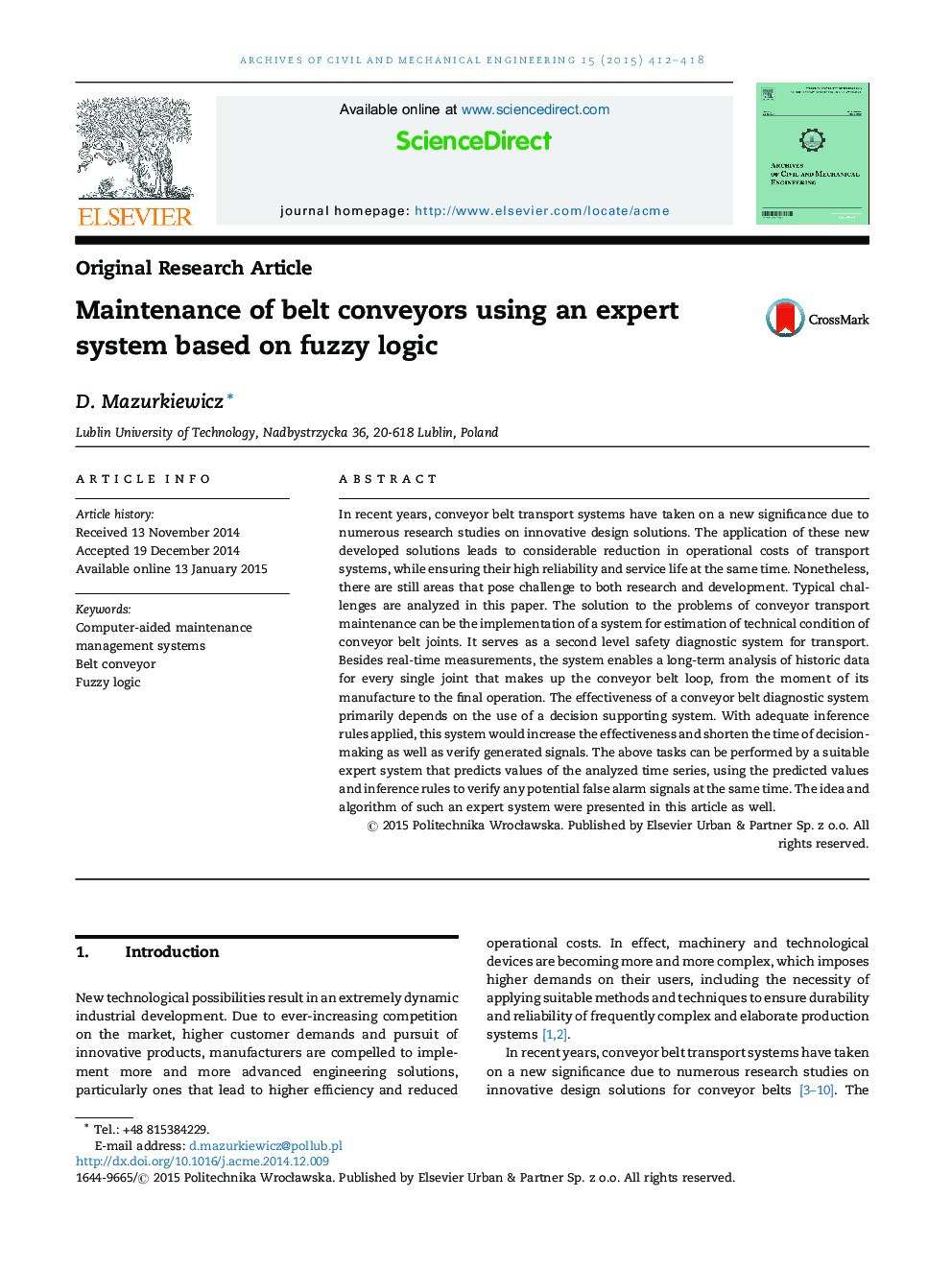| کد مقاله | کد نشریه | سال انتشار | مقاله انگلیسی | نسخه تمام متن |
|---|---|---|---|---|
| 246004 | 1428227 | 2015 | 7 صفحه PDF | دانلود رایگان |
واژگان کلیدی
نکات برجسته
1- مقدمه
2-عملیات یک سیستم مشورتی هوشمند در شرایط عدم قطعیت قابل توجه
3-سیستم پشتیبانی کننده از استنتاج مبتنی بر ارزیابی باقیمانده فازی در مباحث تشخیصی تسمه های حمل بار
شکل 1 -طراحی یک سیستم کنترل خبره (الف) و یک سیستم پشتیبانی تصمیم گیری برای حمل و نقل تسمه حمل بار (ب) (11)
شکل 2 -نتایج طول های پیش بینی شده اتصال چسبی یک تسمه حمل بار
شکل 3 -سیستم مشورتی هوشمند برای نظارت بر اتصالات تسمه
شکل 4 -توابع عضویت مجموعه فازی ورودی های x1
جدول 1 -پایگاه قوانین مدل
شکل 5 -نمودار ورودی x1 (ازدیاد طول لحظه ای اتصال)، ورودی x2 (انحرافی که حین پیش بینی مجموعه های زمانی متوالی تخمین زده شده است) و خروجی y (پاسخ عملگر پیشنهادی) (29)
شکل 6 -رویه محاسبه خروجی y* برای ورودی های و در مدل فازی توسعه داده شده
4-خلاصه
In recent years, conveyor belt transport systems have taken on a new significance due to numerous research studies on innovative design solutions. The application of these new developed solutions leads to considerable reduction in operational costs of transport systems, while ensuring their high reliability and service life at the same time. Nonetheless, there are still areas that pose challenge to both research and development. Typical challenges are analyzed in this paper. The solution to the problems of conveyor transport maintenance can be the implementation of a system for estimation of technical condition of conveyor belt joints. It serves as a second level safety diagnostic system for transport. Besides real-time measurements, the system enables a long-term analysis of historic data for every single joint that makes up the conveyor belt loop, from the moment of its manufacture to the final operation. The effectiveness of a conveyor belt diagnostic system primarily depends on the use of a decision supporting system. With adequate inference rules applied, this system would increase the effectiveness and shorten the time of decision-making as well as verify generated signals. The above tasks can be performed by a suitable expert system that predicts values of the analyzed time series, using the predicted values and inference rules to verify any potential false alarm signals at the same time. The idea and algorithm of such an expert system were presented in this article as well.
Journal: Archives of Civil and Mechanical Engineering - Volume 15, Issue 2, February 2015, Pages 412–418
